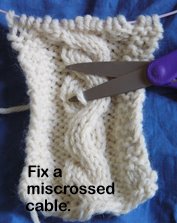.
This post has been updated at 1:00 pm on August 8 to add bird identification info from my friend K. (Thanks, K! :-) ) I have also updated a flower identification from another friend.
There was bridge to be played the day after we arrived in Washington, DC, so I headed up the hill to the zoo. It was about a quarter of a mile from our hotel to the zoo, I think.
Sedum near the hotel.
I have no idea what this is..... Update from an online friend, who says this is crepe myrtle.
It smells nice.........
Don't know what this is, either.
The part of DC near the Woodley Park/Zoo metro stop is a very (very) nice residential neighborhood. Connecticut Ave. is a busy street, but walking along it is pretty nice. Interesting buildings, and gardens. And shade -- always to be sought on a hot, humid July day.
I think this tree with the interesting bark is the same kind of tree that made those fluffy white flowers, above. But I could be wrong.
Is that a banana tree, near the building? Pretty sure Washington is not the right climate for bananas to live outdoors all the time, even though it's so hot in July.............
Trandescantia as ground-cover, in the above image, near the bottom.
Big trees, wide street, interesting architecture. I didn't look to see how expensive it is to live along here, but I'm guessing if one has to ask, one can't afford it. There is a ton of construction along Connecticut Avenue in this area. Both new construction, and renovation of existing buildings.........
We have arrived at the zoo, and are strolling around. This cheetah was staring intensely at something.
I figured he could smell and/or hear prey animals in another enclosure (and I bet he could), but that was not the focus of his attention.
No, this is what he was interested in. Another male, giving him the stink eye. They were in separate enclosures, but they were still staking out and guarding territory. This one lay down provocatively, right next to the fence, which was too much for the one above, who charged the fence, sending this one slinking off.
There was a zoo volunteer right there, generously sharing info. He said that while cheetah brothers will stake out and guard a territory together, male cheetahs will always chase off unrelated males. These two are both males, and are unrelated.................
I thought it was cool to get to see them doing something they might really do in the wild, humans or no humans.
This pig is hard to see, alas. I'm pretty sure his eye is just below the highest pale fuzzy area on his face. Love the tassels on his ears.
I believe this is a Ruppell's Griffon vulture. They are big...........
American bison (commonly called buffalo). He needs a good brushing, but I don't suppose he shares my assessment of that necessity.
Water lily.
Hornbills.
I neglected to capture the id info on this bird. UPDATE from my friend K. -- American bittern.
He was practicing his fishing technique. Holding this very intent pose, with his neck in a taut Z shape, and then instantly grabbing things out of the water. Sticks. Leaves. I suspect there are no fish in this water. Or maybe he just can't see very well?
Whooping crane! At one point the entire population of this species was 21 individuals. Through a lot of heroic effort, over decades, they are starting to come back. People have raised them by hand, and have taught them to migrate by showing them the routes with ultralight aircraft.
This individual was right next to the mesh protecting him (her?) from us. We could stand one yard away from this large and amazing bird. Wow.
I got exactly one (1) pic of the bird, before the camera decided it was much more sensible to focus on the mesh. So glad I got the one pic!
The mesh, I was interested to note, is knitted! I think this the first time I've noticed that protective fencing might be knitted. This is the whooping crane, but with the camera focused on the mesh instead of the feathers.....
We saw Kori bustards in Des Moines, and they have several at the National Zoo, too.
I have no idea what this is. UPDATE from my friend K. -- this is a black-crowned night heron.
There were lots of them at the zoo, and they were not confined. I didn't see them anywhere else in Washington........... I have spent some time hunting, and don't find this bird. Wish I had captured the id info. Ah well. This one stood still in this pose for some time. I suppose it's not a surprise that birds would have excellent balance...........
Seriema. In the Theropods to Birds class I took, they mentioned seriemas as dino descendants which use some dino hunting techniques (slashing claws) in our modern world.
And who knows -- dinos may have had feather mustaches, too. We know that many two-legged dinos had feathers................
The camera INSISTED on focusing on the mesh rather than the birds. Sigh. These are scarlet ibises, and the zoo has roseate spoonbills, too.
At least the color is as I remember it, even though the focus is off.
The national zoo has lots of flamingos.
I can see how it would be comfortable to rest your head on your back, if your neck were this flexible, but I'm not seeing how it is more restful to stand on one foot. I have to believe that it is, since so many birds seem to find it so, but I don't understand it.
Strong direct sunlight is hard to work with. Peacock. Speaking of slashing claws, look at those spurs on his legs!
Rheas.
.
Subscribe to:
Post Comments (Atom)















































No comments:
Post a Comment